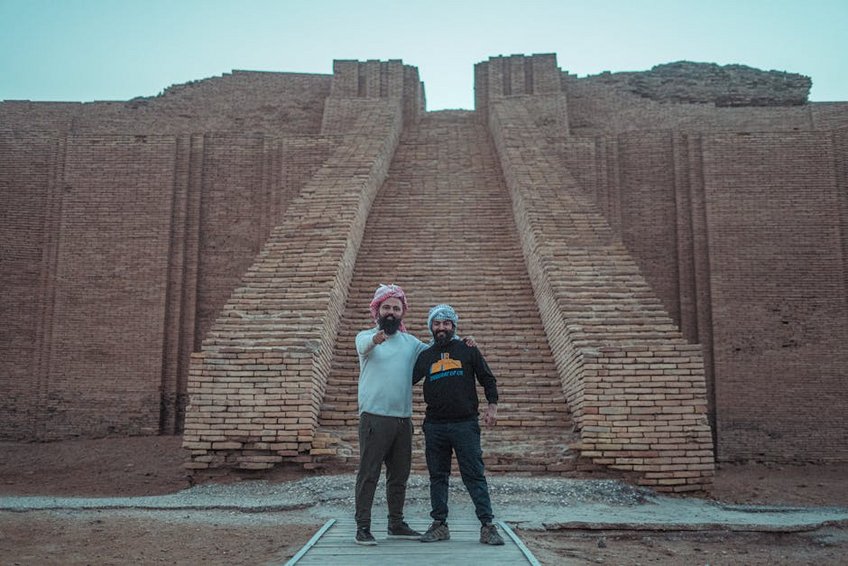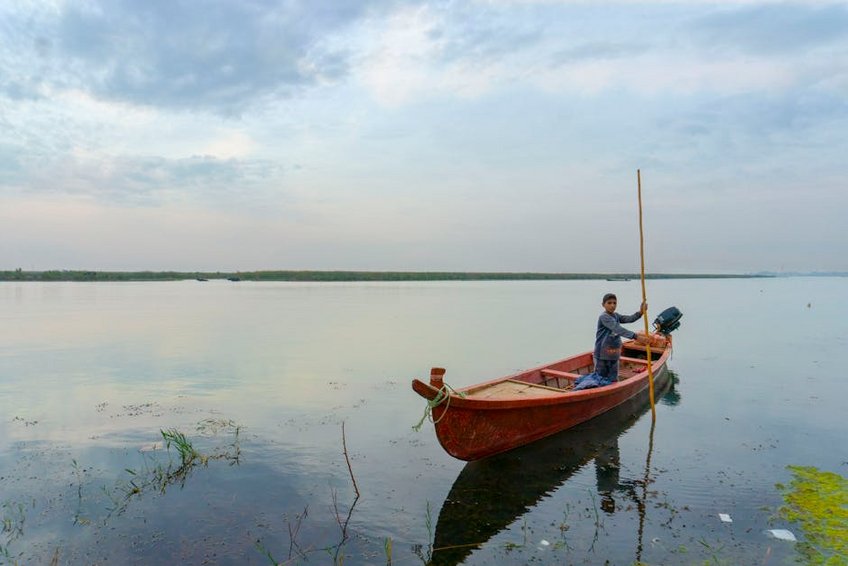Discover the Enchanting Iraq Mesopotamian Marshes: A Traveler’s Guide
Embarking on a journey to the Iraq Mesopotamian Marshes feels like stepping into a living history book, where ancient traditions and breathtaking natural beauty intertwine seamlessly. As one of the world’s most unique wetland ecosystems, these marshes offer an unparalleled adventure for intrepid travelers seeking authentic cultural experiences and serene landscapes. You’ll find yourself gliding through tranquil waterways in traditional mashoof boats, surrounded by lush reed beds that shelter diverse birdlife and the welcoming Ma’dan people, often called the Marsh Arabs. This region, often referred to as the “Garden of Eden,” has rebounded remarkably after environmental challenges, now showcasing vibrant communities and restored habitats that will captivate your senses. The Iraq Mesopotamian Marshes provide not just a destination but a profound connection to Mesopotamia’s cradle of civilization, where you can witness sunrise over endless waterways and hear stories passed down through generations. Whether you’re a nature enthusiast, history buff, or cultural explorer, this hidden gem promises memories that will linger long after your visit, blending adventure with moments of peaceful reflection in one of Iraq’s most resilient landscapes.
Iraq Mesopotamian Marshes Essential Information – What Every Traveler Should Know
Understanding the Iraq Mesopotamian Marshes begins with appreciating their geographical and historical significance, spanning southern Iraq’s governorates like Maysan, Dhi Qar, and Basra. These wetlands, fed by the Tigris and Euphrates rivers, create a vast aquatic world where water buffalo roam freely and ancient fishing traditions thrive. You’ll discover three main marsh areas: Central Marshes, Hammar Marshes, and Hawizeh Marshes, each offering distinct ecosystems and cultural nuances. Historically, this region faced severe drainage under Saddam Hussein’s regime but has seen incredible regeneration efforts since 2003, now recognized as a UNESCO World Heritage Site for its ecological and cultural value. As a traveler, you’ll need to grasp the seasonal variations—water levels peak in spring from snowmelt, creating ideal conditions for boating, while summer brings intense heat that shifts activities to early mornings and evenings. The local Ma’dan communities maintain unique stilt houses called mudhifs and rely on buffalo herding and fishing, offering you immersive cultural exchanges that few other destinations can match. Safety considerations are crucial; while the marshes themselves are generally peaceful, you must stay informed about current travel advisories and work with reputable guides to ensure a smooth experience.
What Are the Mesopotamian Marshes? – A Natural Wonder Explained
- The marshes form one of the Middle East’s largest wetland systems, covering up to 20,000 square kilometers during peak seasons, with water depths varying from 1 to 3 meters in different areas.
- You’ll encounter incredible biodiversity here, including over 300 bird species like sacred ibises and marbled teals, plus endemic fish such as the Mesopotamian catfish, making it a paradise for wildlife enthusiasts.
- Local ecosystems feature dense phragmites reeds and papyrus plants that create floating islands, supporting traditional livelihoods like reed harvesting for construction and handicrafts you can observe firsthand.
- Budget travelers can manage with $50-100 daily by joining group tours, staying in basic guesthouses or homestays ($20-40/night), and enjoying local meals like masgouf fish ($5-10), plus allocating $30 for guide services and boat rentals.
- Mid-range experiences at $150-300 per day include private guided tours with English-speaking experts, comfortable eco-lodges or boutique hotels ($80-150/night), and curated cultural activities like traditional music performances or handicraft workshops ($20-50 each).
- Luxury packages costing $500+ daily feature exclusive boat charters, stays in premium marsh-side accommodations with modern amenities, personalized itineraries including archaeological site visits, and gourmet dining with local chefs preparing regional specialties.
- UNESCO World Heritage Centre – The Ahwar of Southern Iraq
- Lonely Planet – Mesopotamian Marshes Travel Guide
Historical and Cultural Significance – Ancient Roots and Modern Resilience
Delving into the Iraq Mesopotamian Marshes’ history reveals connections to Sumerian civilizations, where these waters nurtured early human settlements and agricultural innovations. You’ll hear legends linking the area to the Biblical Garden of Eden, with archaeological evidence showing continuous habitation for over 5,000 years. The Ma’dan people have developed unique adaptations, such as building entire villages on artificial islands and crafting watertight boats from reeds, preserving skills that you can learn about during guided tours. Cultural revival efforts since the marshes’ restoration have empowered communities to share their heritage through storytelling, music, and handicraft demonstrations, giving you opportunities to support sustainable tourism directly. Modern challenges include water scarcity from upstream damming, but conservation projects involve local families in ecotourism, ensuring your visit contributes to preserving this irreplaceable cultural landscape for future generations.
Iraq Mesopotamian Marshes Planning Your Trip – Seasonal Tips and Budget Advice
Planning your Iraq Mesopotamian Marshes adventure requires careful timing and budgeting, as this destination offers different experiences across seasons and caters to various travel styles. You’ll want to coordinate your visit with optimal weather conditions—spring (March to May) brings mild temperatures around 25°C (77°F) and high water levels perfect for boating, while autumn (September to November) offers comfortable climates for exploring cultural sites. Summer months (June to August) can see temperatures soaring above 45°C (113°F), making early morning or late evening activities essential, whereas winter (December to February) brings cooler weather around 15°C (59°F) but lower water levels that may limit some routes. Budget-wise, you should account for guided tours as independent travel is challenging; expect to spend $50-100 per day for budget options covering basic accommodation and meals, while mid-range experiences with private guides and comfortable lodging range from $150-300 daily. Luxury packages including specialized cultural activities and premium accommodations can reach $500+ per day, but all options require factoring in visa fees, travel insurance, and emergency funds for this unique destination.
Best Time to Visit Iraq Mesopotamian Marshes – Seasonal Analysis
Choosing when to explore the Iraq Mesopotamian Marshes depends largely on your priorities—spring delivers the lushest landscapes and abundant bird migrations, with water levels at their peak for seamless navigation through narrow channels. You’ll enjoy pleasant temperatures averaging 20-25°C (68-77°F) in April, ideal for photography and wildlife spotting without extreme heat discomfort. Autumn provides similar advantages with fewer tourists and vibrant sunset colors reflecting off the waterways, though occasional rainfall in November might require flexible scheduling. Summer visits demand heat adaptation strategies like planning activities before 10 AM or after 4 PM, while winter offers crisp air and cultural immersion opportunities as communities gather indoors, but some water routes may be inaccessible due to lower levels. Ultimately, March-May and September-November strike the best balance for most travelers, ensuring you experience the marshes’ full splendor while avoiding weather extremes.
Budget Planning and Costs – From Frugal to Luxury Options
Essential Preparation Checklist – Practical Steps for Your Journey
Preparing for the Iraq Mesopotamian Marshes involves both practical and cultural considerations—start by securing your visa through Iraqi embassies, which typically requires invitation letters from tour operators and can take several weeks for processing. You should pack lightweight, breathable clothing covering arms and legs for sun protection and cultural respect, plus sturdy waterproof shoes for muddy terrain and a high-quality mosquito repellent for wetland areas. Essential documents include multiple passport copies, travel insurance with medical evacuation coverage, and vaccination records for routine immunizations; consider hepatitis A and typhoid vaccines due to local conditions. Technology preparation involves downloading offline maps since internet connectivity is limited, carrying power banks for charging devices, and learning basic Arabic phrases to enhance interactions with Ma’dan communities. Finally, book with reputable tour companies specializing in the region, confirm safety protocols, and inform your embassy of travel plans to ensure a smooth and secure marshes experience.

Iraq Mesopotamian Marshes Top Attractions and Activities – Must-Do Experiences
Exploring the Iraq Mesopotamian Marshes unveils a world of unique attractions that blend natural wonders with cultural immersion, ensuring every day brings new discoveries. You can spend mornings gliding through narrow waterways in traditional mashoof boats, spotting water buffalo herds and listening to birdcalls from hidden avian colonies, then afternoons visiting floating markets where locals trade fish, reeds, and handicrafts. Don’t miss the Chibaish Marsh area for its iconic reed houses and sunset views over endless horizons, or the Hawizeh Marsh bordering Iran for exceptional birdwatching opportunities including rare species like Basra reed warblers. Cultural activities abound, such as participating in fishing demonstrations using ancient techniques, learning to weave reed mats with Ma’dan artisans, and sharing meals with families to hear oral histories about marsh life. Adventure seekers can opt for multi-day camping trips on artificial islands, stargazing under incredibly clear skies, or photography expeditions capturing the interplay of light and water at dawn—each experience deepens your connection to this resilient ecosystem and its people.
Must-See Highlights – Iconic Sights and Sounds
Your Iraq Mesopotamian Marshes itinerary should prioritize several key highlights that define the region’s character, starting with a sunrise boat tour through the Central Marshes where mist rises off the water and herons take flight in golden light. You’ll want to visit the Ma’dan cultural centers in Chibaish to see mudhif construction demonstrations and understand how these elegant reed structures have housed communities for millennia. The Hammar Marsh offers spectacular floating villages where you can observe daily life unfolding on water, from children paddling to school to women preparing traditional bread called khubz. Archaeological enthusiasts shouldn’t nearby Ur, an ancient Sumerian city just hours away, where ziggurats and royal tombs provide context to the marshes’ historical significance. Each highlight combines natural beauty with living culture, giving you profound insights into why this landscape has captivated explorers and scholars for centuries.
Hidden Gems and Local Favorites – Off-the-Beaten-Path Discoveries
Venturing beyond main tourist routes in the Iraq Mesopotamian Marshes reveals hidden gems cherished by locals, such as secluded fishing spots where you can try your hand at catching bunni fish using traditional methods taught by Ma’dan guides. You might discover small islands hosting seasonal festivals like the Date Harvest Celebration, where communities gather for music, dancing, and sharing stories—if your timing aligns, these events offer unforgettable cultural exchanges. Local favorites include early morning buffalo milking sessions where you can taste fresh dairy products, or visiting reed paper workshops where artisans transform marsh plants into beautiful stationery using ancient techniques. Another lesser-known experience involves night boating under full moons, when bioluminescent organisms sometimes illuminate the water with ethereal glows, creating magical moments far from crowded attractions. These authentic interactions not only enrich your journey but also support community-based tourism initiatives preserving the marshes’ unique heritage.
Iraq Mesopotamian Marshes Practical Travel Information – Logistics and Accommodation
Navigating the practical aspects of visiting the Iraq Mesopotamian Marshes ensures a comfortable and enriching journey, starting with transportation—most international travelers fly into Baghdad or Basra airports, then arrange ground transfers to marsh gateway cities like Nasiriyah or Amarah. You’ll typically need hired cars with drivers familiar with regional checkpoints and road conditions, followed by boat transfers into the marshes themselves, which can cost $50-150 depending on duration and group size. Accommodation ranges from basic homestays where you sleep on reed mats in family compounds to eco-lodges with private facilities and stunning water views, all emphasizing sustainable practices that benefit local communities. Communication requires patience as English proficiency varies; learning basic Arabic phrases or traveling with guides greatly enhances interactions. Health considerations include carrying water purification tablets since tap water isn’t potable, packing a comprehensive first-aid kit for minor injuries, and ensuring your insurance covers remote area medical evacuation. Currency exchange is best done in major cities before arrival, as ATMs are scarce in marsh areas, and you should carry small USD or Iraqi dinar notes for purchases like handicrafts or tips.
| Category | Options/Features | Price Range (USD) |
|---|---|---|
| Accommodation | Homestays, eco-lodges, guesthouses with basic amenities | $20-150 per night |
| Transportation | Private cars, boat rentals, guided tour vehicles | $50-200 per day |
| Food & Dining | Local eateries, family meals, lodge restaurants | $10-50 per day |
| Activities & Tours | Boat trips, cultural workshops, guided hikes | $30-100 per activity |


